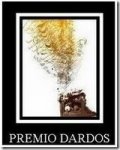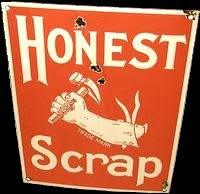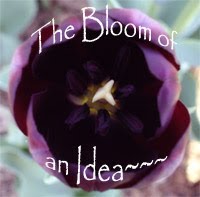
Shallee McArthur is hosting "What's Your Process?" Blogfest.
She wants to know how we approach writing, any aspect of it.
http://shalleemcarthur.blogspot.com/2011/01/announcing-whats-your-process-blogfest.html
Meet my writing process : the Dali Rama
No. Not the Dalai Lama.
Not even a someone actually.
A something.
A very important something if you're a writer.
No. Not the Dalai Lama.
Not even a someone actually.
A something.
A very important something if you're a writer.
Honest.
But speaking of the Dalai Lama, he did say, "Happiness is not something ready made. It comes from your own actions."
And couldn't the same thing be said of the novels we write?
What was that bit of dialogue between Alice and the Mad Hatter?
Alice : "I've had nothing yet. So I can't take any more."
Hatter : "You mean you can't take any less. It's very easy to take more than nothing."
And isn't that what our novels start out as? Nothing. Then along strolls a colorful character, an intriguing situation blossoms in our thoughts, or a bit of zingy dialogue crackles in our mind's ear.
But what do you do with those isolated bits?
Ah, that's where the Dali-Rama comes into play as we shift to another bit of back-and-forth in the adventures of Alice.
"Which road do I take?," asked Alice.
"Where do you want to go?," replied the Cheshire Cat.
"I don't know."
"Then," smiled the cat, "it really doesn't matter."
But it does matter when you write a novel. You have to know where you are going if you're going to take the reader there. We need a compass. More importantly, we need a map.
We need the Dali-Rama.
And its motto is a twist to one of the sayings of the artist who gave birth to it : Salvador Dali --
Intelligence without direction is a bird without wings. As authors, we paint our novels. To paint well we need a canvas. Yes, you guessed it : the Dali-Rama.
Intelligence without direction is a bird without wings. As authors, we paint our novels. To paint well we need a canvas. Yes, you guessed it : the Dali-Rama.
How many times have you stared at a blank page in agony? Buy some 3 X 5 index cards. Write your characters on one, your bits of dialogue on another, your large, compelling situation on a larger one.
The great thing about those index cards is that you can fit them into your purse {or me into my backpack (what Sandra, my best friend, calls my "Man-Purse")}.
And whenever an idea for dialogue, plot, scene re-do, or character development hits you, you scribble it down upon your stash of ready index cards.
Now, buy a cork board.
Me, I take construction paper and tape it over the board. I get markers in different colors. And then, I'm ready to paint myself a novel.
Me, I take construction paper and tape it over the board. I get markers in different colors. And then, I'm ready to paint myself a novel.
This is not a story board. That directors do AFTER the script is written.
We're more like detectives sleuthing a murder case. All those bits of characters, dialogue, situations, plot twists. We pin them up on the board in haphazard fashion. No rhyme, no reason but our subconscious.
We're more like detectives sleuthing a murder case. All those bits of characters, dialogue, situations, plot twists. We pin them up on the board in haphazard fashion. No rhyme, no reason but our subconscious.
Then, step back. Look at the surrealistic pattern you've made. Start arranging patterns in the chaos. Draw lines on your Dali-Rama connecting your different characters along paths of love, blood, hate, and circumstance. Scribble questions next to each one :
"What drives him to strive for perfection? What shaped her into a lusty gossip? Why would anyone do {fill in the blank.} Why a bank job and not a jewel heist?
What skills does a cat burglar have? How would one go about obtaining those skills and knowledge?
"What drives him to strive for perfection? What shaped her into a lusty gossip? Why would anyone do {fill in the blank.} Why a bank job and not a jewel heist?
What skills does a cat burglar have? How would one go about obtaining those skills and knowledge?
From the answers to those or other similar questions are born more scribbled index cards.
By now, your muse will be churning. You will see how one character fits into another in ways you hadn't even thought of when you started.
You see where you can flip this situation on its ear, blending it into laughter, suspense, or tears.
You see where you can flip this situation on its ear, blending it into laughter, suspense, or tears.
Like Dali himself, don't let structure bind you to convention.
Look at the overall "feel" and "look" of the Dali-Rama. Remember the soft, melting pocket watch in Dali's famous "Persistence of Memory?"
It whispered that time is not hard as we thought. In fact, time is often irrelevant. Think of the time spent in a dentist's chair during a root canal.
Time changes according to circumstance. And so should the parameters of your novel.
Look at the overall "feel" and "look" of the Dali-Rama. Remember the soft, melting pocket watch in Dali's famous "Persistence of Memory?"
It whispered that time is not hard as we thought. In fact, time is often irrelevant. Think of the time spent in a dentist's chair during a root canal.
Time changes according to circumstance. And so should the parameters of your novel.
There is another beautiful thing about the Dali-Rama. It postpones the actual writing of the novel. And who of us has not hesitated and hesitated before a daunting new novel?
Now, you have an intelligent-sounding reason for procrastinating!
Now, you have an intelligent-sounding reason for procrastinating!
And I'm only being slightly humorous. I've had friends make actual pieces of art of their Dali-Rama's. They pasted frilled paths, colorful twists, only to phone me in wonder that suddenly as they looked at it, the novel just jelled into something fantastic and unexpected.
They couldn't wait to get started on this awesome surprise of a novel that had just occurred to them.
They couldn't wait to get started on this awesome surprise of a novel that had just occurred to them.
And because of the Dali-Rama, they knew exactly where they were going,
scene by scene, plot twist by plot-twist onto a climax to which they couldn't wait to take the reader. Trust me. If you follow the Dali-Rama, it will not fail you.
scene by scene, plot twist by plot-twist onto a climax to which they couldn't wait to take the reader. Trust me. If you follow the Dali-Rama, it will not fail you.
Surprise you, yes. Absorb you, yes. Fail you, no.
And to present the another side of the process, here is the master himself : Stephen King :
***


























































































































































































Dali-rama makes me want to start on a novel. I love colored pens, and can imagine a painted novel!!
ReplyDeleteThank you for sharing this :)
Dali-rama has been visiting me over the last few days. We are working on a new story together... and I can't wait to dive in.
ReplyDeleteI love your unique approaches to these blogfests. And love that you quote Alice in Wonderland even more!
Hey, thanks for coming by. I've used the index cards and cork board many times when tutoring ESL students and remedial English.
ReplyDeleteWhile I don't write novels, I call my writing mind doodles because to me, that's what it is.
Can't wait to read more.
Cathy @ Country Cathy
This is a great method. Thanks for sharing. I may try this sometime. Plus, I love Dali.
ReplyDeleteThanks.
This is so interesting. I make my notes for my characters and key plot points and setting, but once there is dialog, I am compelled to write scenes. I DID though, when I wrote my first mystery (and I will do it again) put all my pieces on post it notes and then create a storyboard of sorts that is not unlike your corkboard. I did it so that clues could be spread and the various suspects examined one or two at a time, instead of in a big mish mash.
ReplyDeleteI am going to use this technique, hope you don't mind if I copy it to my notes to do list.
ReplyDeleteHi,
ReplyDeleteThanks for sharing a roller-coaster of words zooming around a bookshelf, zipping in and out of books, and leaving one quite breathless: as always! ;)
best
F
A cork board what a great idea! I really need to get one of those to organize my thoughts.
ReplyDeleteThat is a very interesting idea, and one I never knew before. I will have to try this out and see if it works. I can really see how creative it can be and thus provides a self made muse instead of just the one inside your head.
ReplyDeleteI could be wrong but I believe you've mentioned this method before. It seemed like a great method then and it still does now. I write a lot of poems in a way similar to this. I write down lots of words to describe a particular thing, then I put them all on a board before me and try to put interesting combinations and images together. It's so much fun!
ReplyDeleteJai
Dali - Rama is a great way to start working on a novel. I will try it for a novel as soon as I finish my current one.
ReplyDeleteI need to get a cork-board. Thanks for sharing your wonderful process.
This comment has been removed by the author.
ReplyDeleteGreat process! I need to try the notecard/corkboard thing-- I'm a visual person, so that could work well for me. Thanks for sharing!
ReplyDeleteLoved reading about the Dali - Rama. I have post its on the wall, but need to do more than just start.
ReplyDeleteEvery trip with you is a learning experience. I love my cork board.
ReplyDeleteM Pax : Post-It's are just fine. But the Dali-Rama is more fun.
ReplyDeleteShallee : Being a visual person, you probably would get a great deal of benefit from the old Dali. And thanks for giving us such a fine blogfest.
Rachna : Good luck on your current novel. I hope it hits the bestseller lists.
Jai : Yes, I did do a variation of this post sometime back, but I thought it fit the subject of this blogfest to ignore. Thanks for visiting. And I can see writing poetry with this method would be quite visual and lyrical.
Summer : Thanks for visiting. And yes, to have a visual representation of your muse can help you avoid some of those plot-holes we all hate. Nice to see you here again.
Heather : Yes, my old corkboard needs replacing : too many muses have traveled its surface! Thanks for visiting. I always love to read your comments.
Francine : My supervisor would agree with you that I am a roller-coaster of words! LOL. Thanks for visiting and commenting. It means a lot.
Imagery Imagined : I put the Dali-Rama out there for my friends to use. I hope it helps you and your muse in some small way. Thanks for visiting and caring enough to comment.
Hart : How interesting. I first stumbled across the Dali-Rama while writing my historical fantasy, RITES OF PASSAGE. I had to use it to keep all the real clues and the red herrings in some kind of order. Great minds think alike, don't they? Thanks for commenting. It means a lot coming from you.
Christine : Wasn't Dali an amazing artist and personality? I'm glad you liked my use of his thinking in my Dali-Rama. Don't be a stranger.
Flowering Mama : Word doodles you call them. William James called it stream of consciousness. Whatever name you use, it's fun. Thanks for returning the visit. Come back.
PK : I hope the Dali-Rama will help you in some small way to make your writing easier and more tight. Whenever I can squeeze in an ALICE IN WONDERLAND quote, it makes me smile. Thanks for visiting and commenting.
Damyanti : I think Dali would approve of you calling writing his way to be painting a novel! Thanks for visiting. I always like to read your comments.
This comment has been removed by the author.
ReplyDeleteMary : I'm glad you take away something useful from my posts. It makes the former teacher in me very happy. May your publishing dreams come true. Roland
ReplyDeleteThanks for sharing your process! It was a very interesting read.
ReplyDeleteThis is a process I am hoping to use. I make my notes for my characters and key plot points and setting, and I plan for pivotal scenes. I use post it notes and storyboards full of images and ideas. I think the visual prompts help to keep the work moving forward toward the goal and save time in revisions which is the lowest level of hell ;)
ReplyDeleteVery well put together, Roland. As usual.
ReplyDeleteElena : How is your cold? Mine is handing me my ... ah, what I sit on! LOL. Thanks for the kind words.
ReplyDeleteElaine : I think Michael would agree with you about the editing and revising level of that hot place! I'm glad I'm not the only one who uses visual aides in plotting his novel.
Golden Eagle : I'm glad you enjoyed the read. I'm sorry I haven't been able to get around to all my blogfesting friends this time. My cold is laying me low. So low that I think I've developed the bends!
Brilliant! This is a great method - thank you for sharing :)
ReplyDeleteStephen King is such a generous and down to earth famous writer.
ReplyDeleteThis sounds really cool. As a visual person, it might help me in my planning stages. Thanks for sharing it.
ReplyDeleteGreat post! I've been struggling with how to start a new novel (wanted to try a different process). I think I'll try the Dali-Rama. It does sound fun and exactly what I need. Thanks!
ReplyDeleteAmy : I hope the Dali-Rami inspires you as much as it does me. It is fun -- and shouldn't we have fun in our dreams?
ReplyDeleteKari : Visual people like you and me do well with this method. Try it for a short story and see how you find it.
TechnoBabe : Stephen King is, indeed, an inspiration for us to model after should we ever make it to the limelight in taking fame and media attention well.
Writing Nut : I like this method. I think it has some real strong points for the visually minded. Thanks for liking this suggestion of mine, Roland
I agree that you need to know where your character ends up in order to get them there. I have a seat of the pants writing buddy who never does this though and her character arc in very interesting ways. I guess that is just how her mind works. I'm more of a symmetrical person. 0_0
ReplyDeleteEdge of Your Seat Romance
Raquel : I'm very much "whatever works for you" person and writer. Like you, I need a goal to shoot for in my novel, so I can throw ever more difficult obstacles in the way of my hero. Thanks for caring enough to comment. This cold I have is still laying me low.
ReplyDelete